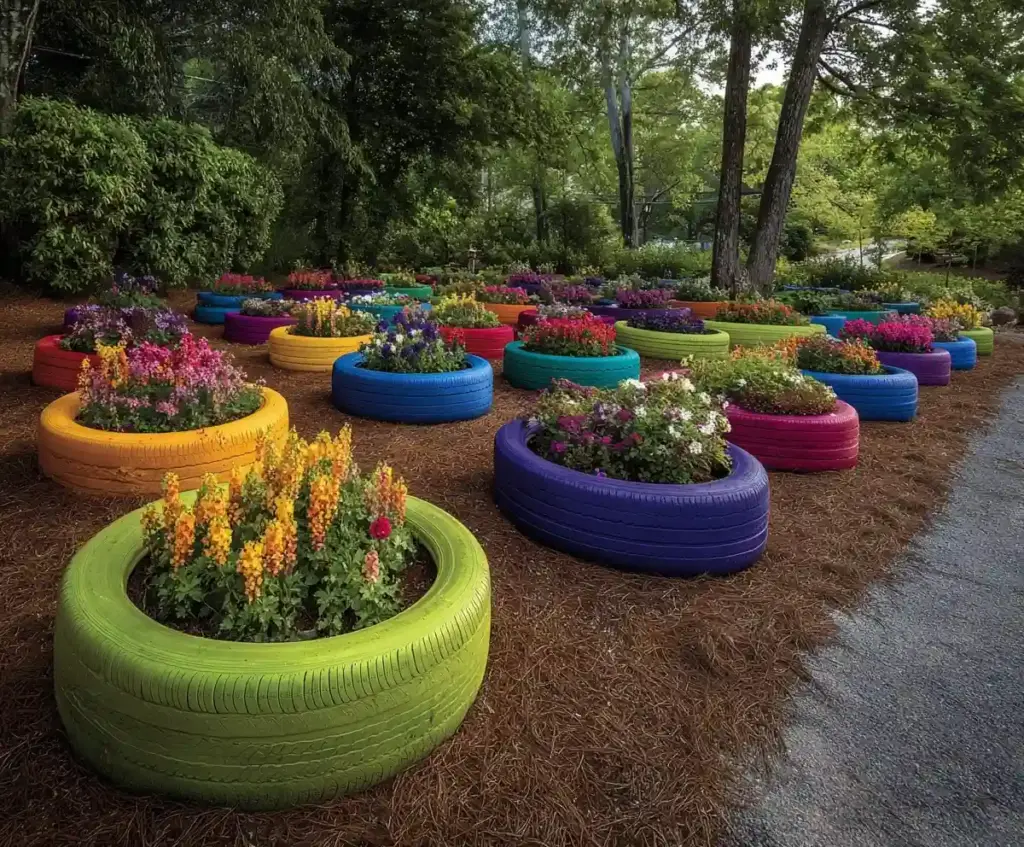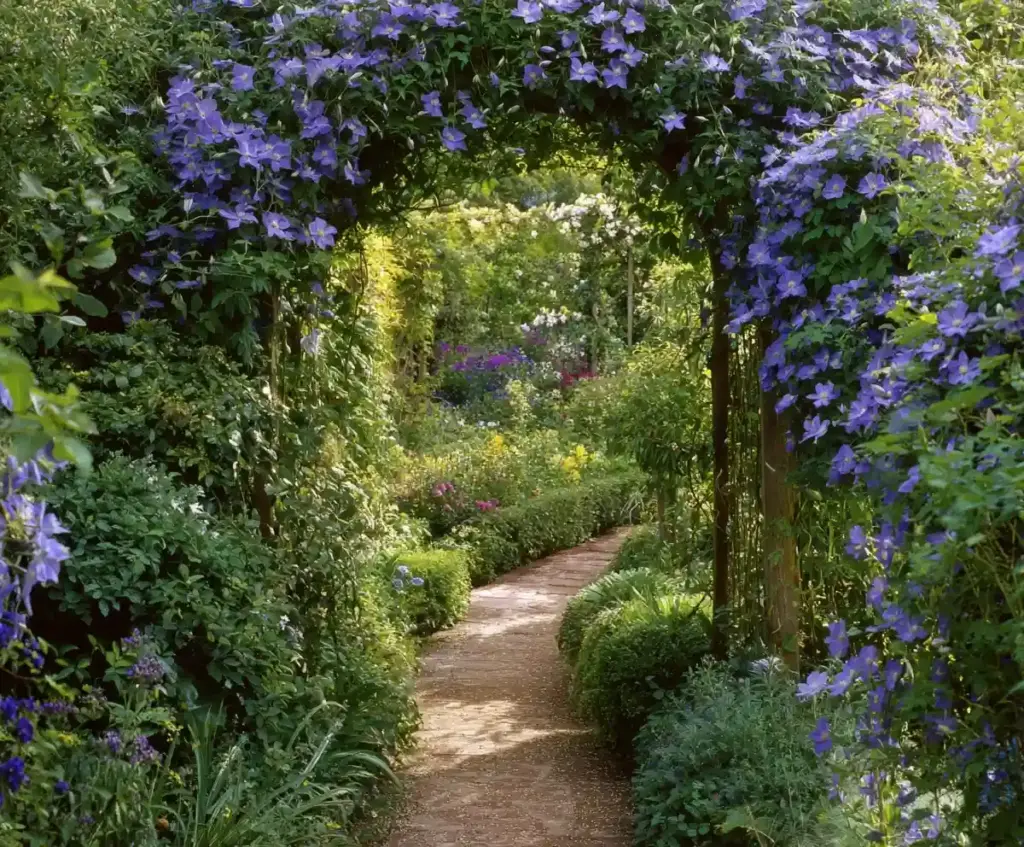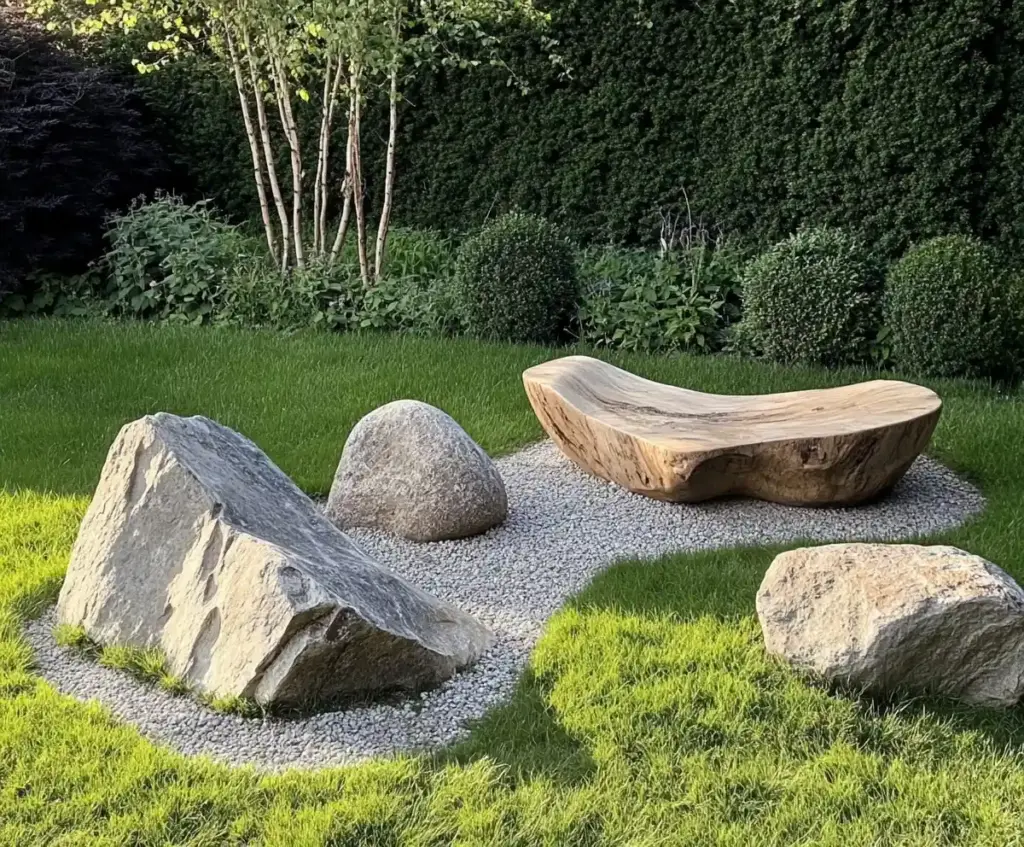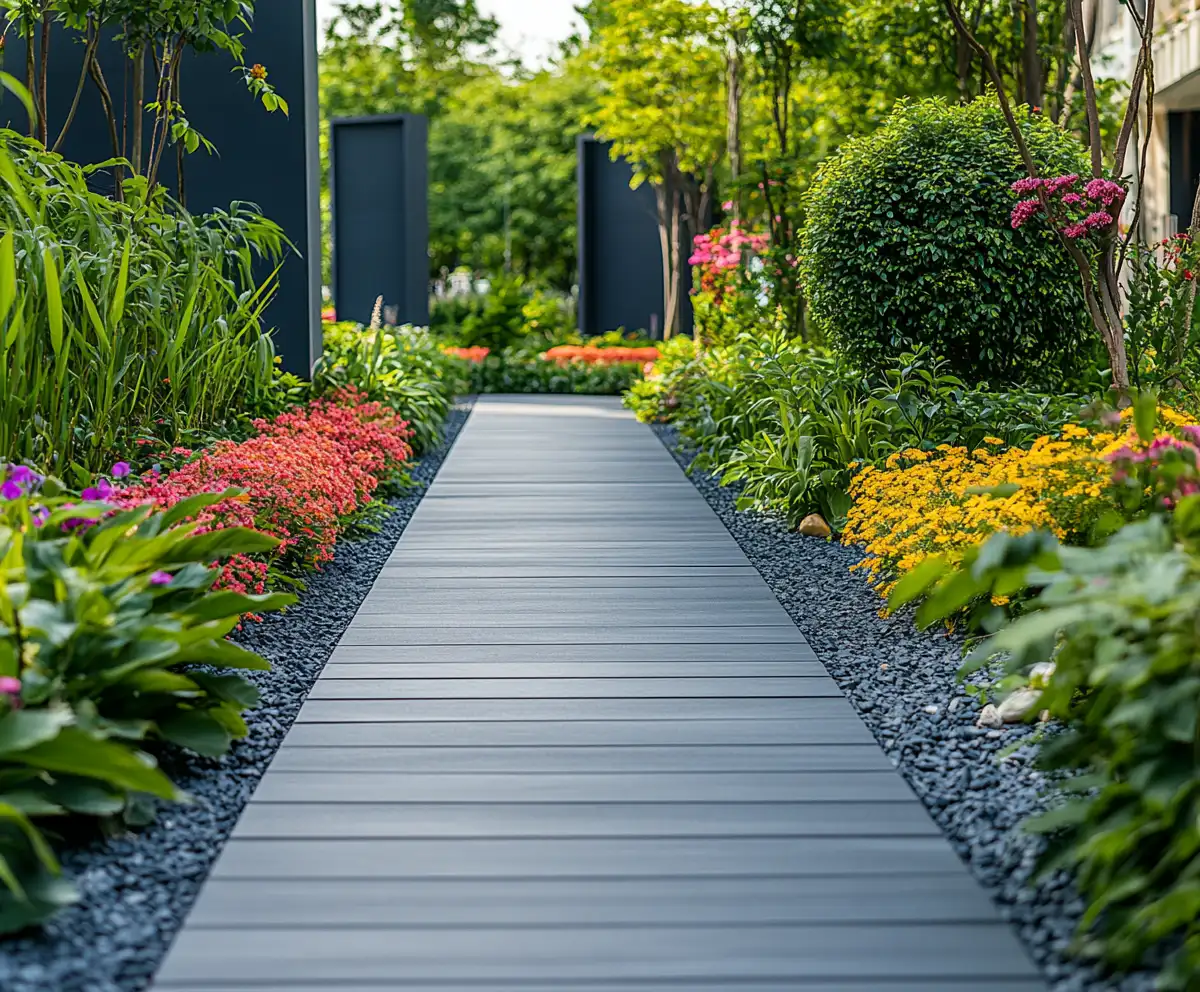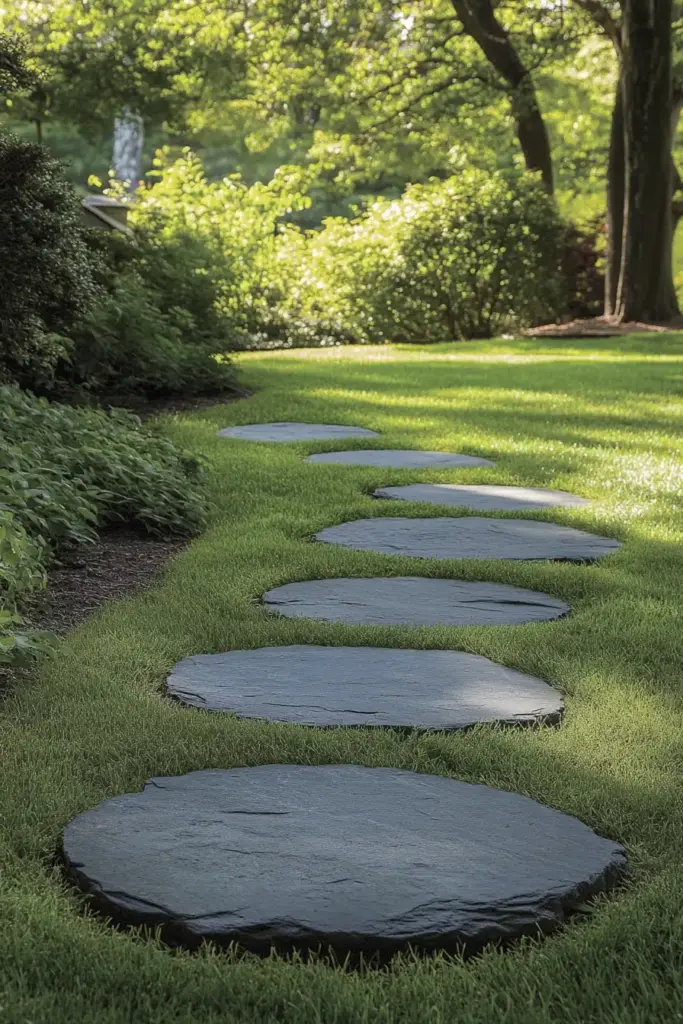Flagstone path ideas are a fantastic way to bring both charm and structure to your outdoor space. Whether you’re crafting a quaint cottage garden or enhancing a modern backyard, flagstone offers a timeless, earthy appeal that blends beautifully with nature.
With the right layout, stone type, and surrounding features—like vibrant plants or creative flower beds—you can design a walkway that’s both functional and visually captivating. This guide explores nine inspiring flagstone path ideas, each offering unique style, practical benefits, and plenty of design flexibility for your next garden upgrade.
Ready to plan a path that transforms your landscape? Let’s dive in.
Table of Contents
1. Stone Circle Design
A stone circle design is one of the most eye-catching flagstone path ideas for outdoor spaces. This layout acts as a focal point, drawing the eye while creating a sense of harmony in your garden.
Circular paths made with flagstone can be designed in various sizes, making them adaptable for cozy corners or larger central areas. They’re perfect for defining a seating nook, surrounding a fire pit, or creating a meditative zone within your landscape.
To build this style:
- Lay stones in concentric circles or spiral arrangements
- Use gravel or low-growing plants in the joints for visual softness
- Border the circle with flower beds or shrubs for contrast
Not only do these circular designs elevate aesthetics, but they also guide movement through your space naturally. The organic shape is especially effective in breaking up straight lines and softening the hardscaping in formal gardens.
For extra visual interest, consider mixing flagstone colors or sizes to give the circle more dimension and texture.
2. Stepping Stone Mosaic
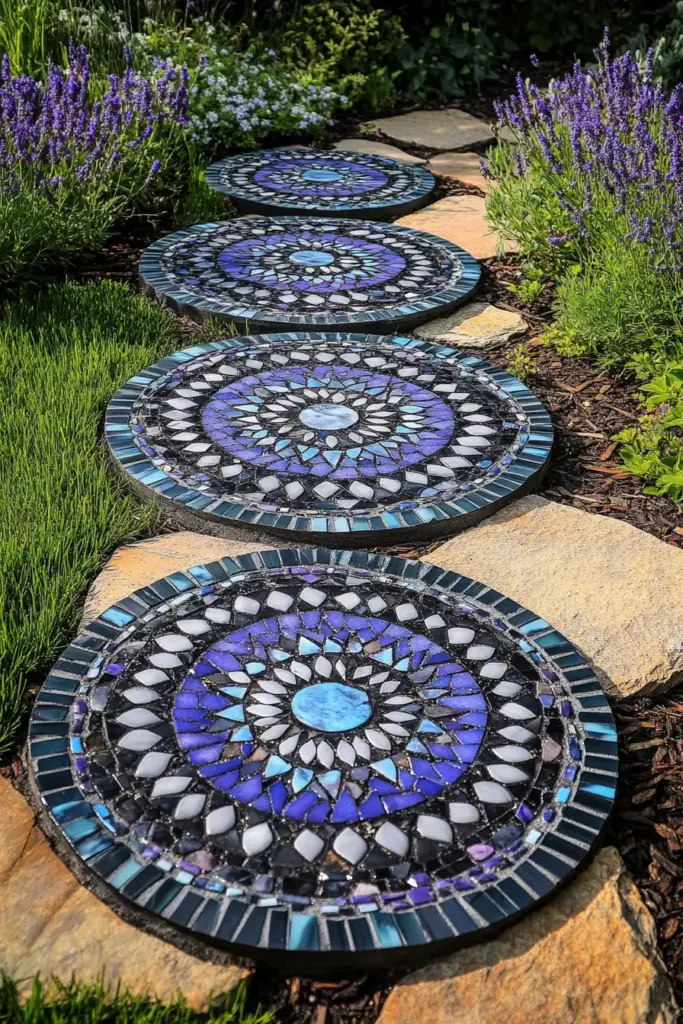
When it comes to artistic flagstone path ideas, a stepping stone mosaic adds personality and flair to any garden walkway. This design combines function and art by turning each step into a visual masterpiece.
Instead of laying uniform stones, a mosaic path uses small flagstone pieces arranged in decorative patterns—often combined with glass, tiles, or pebbles. The result is a vibrant, colorful trail that feels custom-made.
Why choose a stepping stone mosaic?
- Adds creative expression to your landscape
- Allows for endless customization with colors and shapes
- Works well in flower gardens, entryways, or children’s play areas
Design tip: For a more cohesive look, echo colors from nearby plants or structures in your mosaic materials. Neutral palettes blend in naturally, while bolder hues create a fun contrast.
Despite their artistic nature, these mosaics are surprisingly durable. Just ensure the base is solid and level, and fill joints with sand or mortar to keep everything secure.
For gardeners who love DIY projects, crafting your own stepping stones can be a rewarding weekend task that adds lasting charm to your space.
3. Irregular Flagstone Path
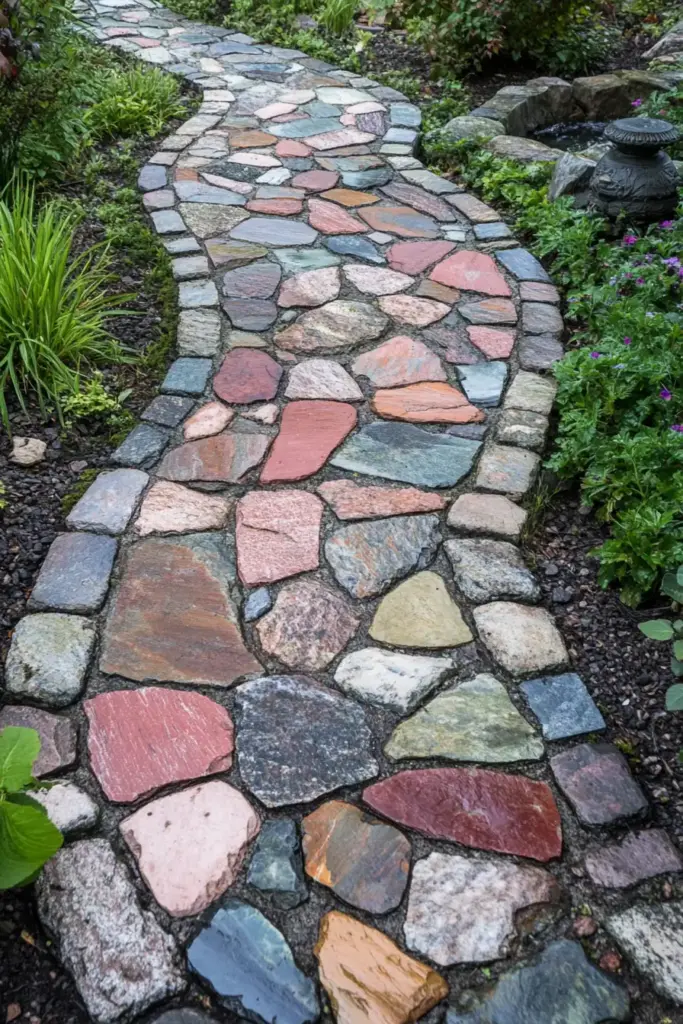
For a casual, organic look, irregular flagstone path ideas are hard to beat. These paths use stones of varying shapes and sizes laid in a seemingly random arrangement that mimics natural formations—perfect for rustic or woodland-style gardens.
The beauty of this design lies in its asymmetry. It doesn’t try to be perfect; instead, it invites the eye to wander and the feet to follow gently winding trails through your landscape.
Benefits of an irregular layout:
- Creates a laid-back, natural feel
- Blends seamlessly with lawns, flower beds, and wooded areas
- Easier to customize around trees, slopes, or garden features
Installation tips:
- Mix large and small flagstones for balance
- Leave 1–2 inches between stones for filling with gravel, moss, or thyme
- Use a compacted gravel base to prevent shifting
To soften the look even more, line the edges with native plants or low-growing foliage. This type of flagstone path feels like it’s always been part of the landscape, making it ideal for homes that embrace a more natural aesthetic.
4. Random Rock Pattern
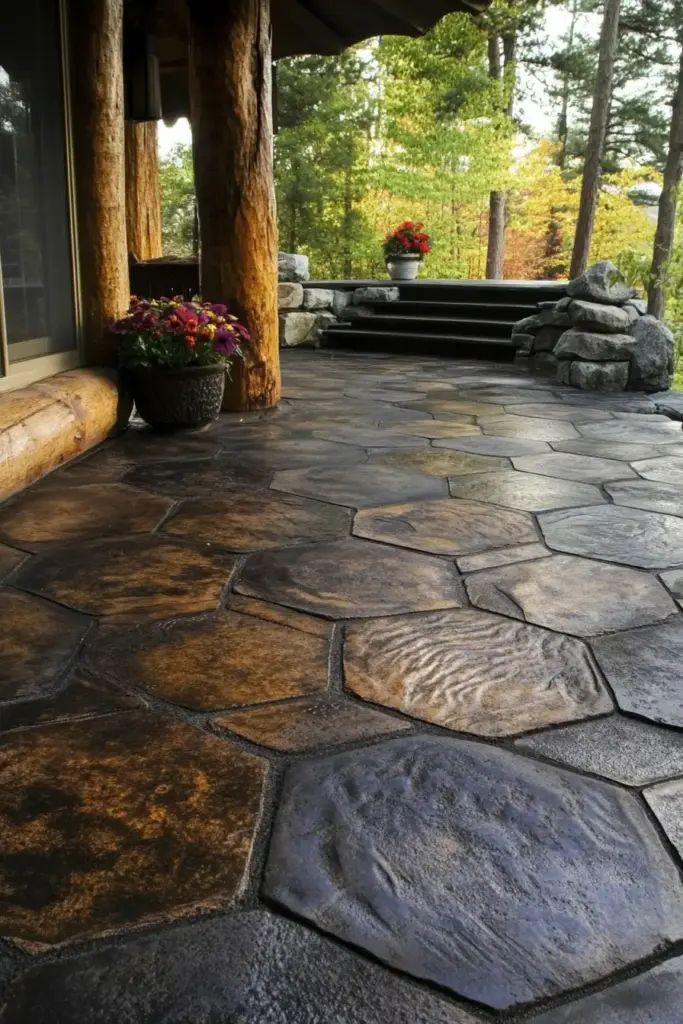
If you love a bit of unpredictability in your landscape design, random rock pattern paths are a standout among popular flagstone path ideas. This style embraces diversity in both stone shape and placement, giving your walkway a relaxed and organic character.
Rather than aiming for symmetry or uniformity, a random rock layout allows you to use different sizes and types of flagstone, often mixed with other materials like slate or quartz for visual contrast.
What makes it appealing?
- Offers a handcrafted, earthy look
- Adapts well to uneven terrain or informal gardens
- Enhances natural drainage through gaps between stones
Design advice:
- Use larger stones in high-traffic zones for stability
- Fill joints with crushed stone, gravel, or hardy ground cover
- Vary the spacing slightly to avoid rigid alignment
This path style works beautifully alongside cottage-style plantings, rock gardens, or sloped areas. And thanks to its versatility, it’s ideal for DIYers who want freedom in their layout without being restricted by exact measurements.
Plus, the irregular spacing promotes water runoff, reducing puddles while supporting the health of surrounding plants.
5. Mixed Material Pathway
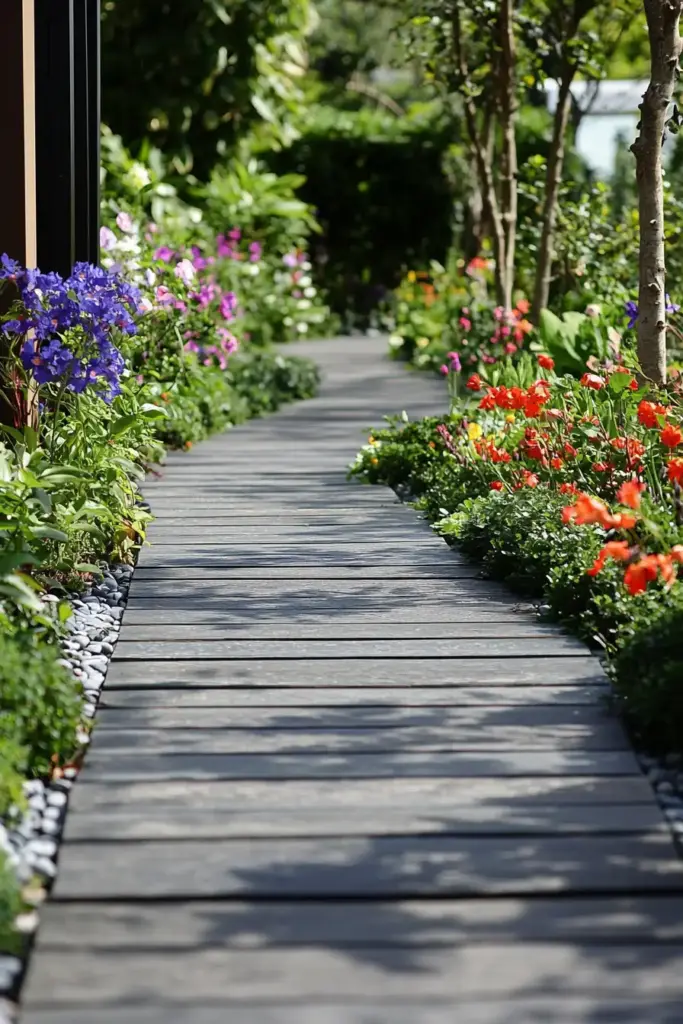
For homeowners seeking a bold and creative twist on traditional flagstone path ideas, a mixed material pathway delivers both function and visual intrigue. This approach blends flagstone with other materials—like brick, gravel, wood, or pebbles—to create dynamic contrast and texture.
It’s an excellent solution for breaking up monotony in long walkways or defining distinct zones in your garden.
Advantages of mixing materials:
- Enhances visual interest with texture and color variation
- Allows creative expression tailored to your landscape style
- Improves functionality and durability in changing weather conditions
Design combinations to try:
- Flagstone framed with red brick for a classic touch
- Wooden sleepers or planks between stones for a rustic vibe
- Gravel strips to improve drainage and add crunch underfoot
You can also use this method to repurpose leftover landscaping materials, making it a cost-effective option. The key is thoughtful planning—layout the pathway in advance to ensure balance and flow, especially where materials transition.
Mixed material paths work well in both modern and traditional settings, offering a customized look that elevates your outdoor space from standard to stunning.
6. Curved Stone Layout
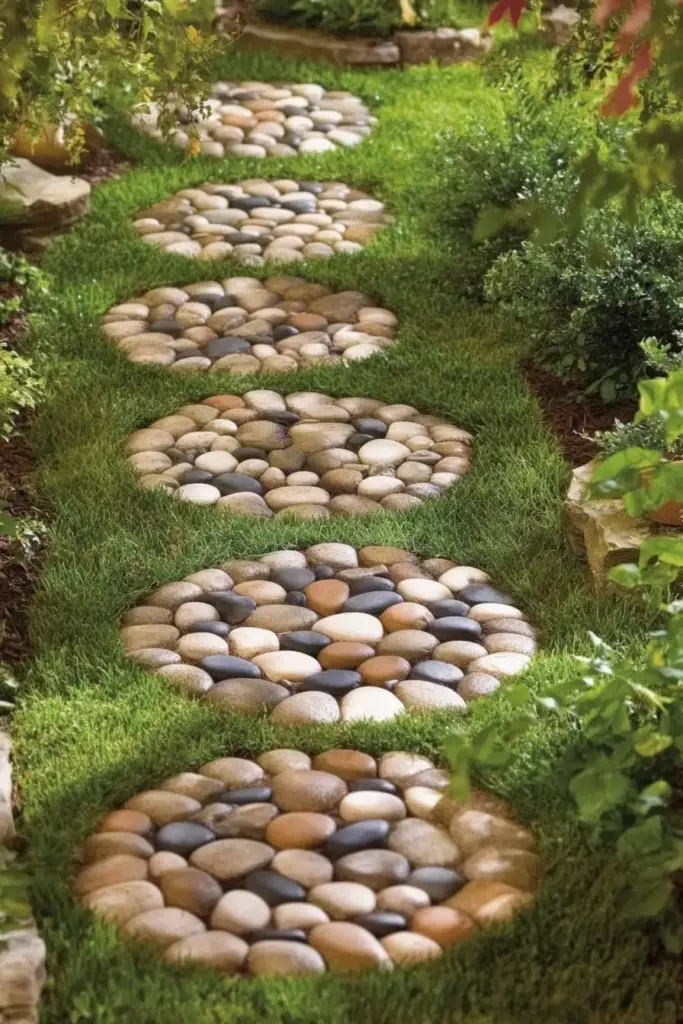
For those who prefer a more fluid and natural garden aesthetic, curved stone layouts are among the most graceful flagstone path ideas. This style mimics the gentle turns of woodland trails or winding rivers, guiding the eye—and foot traffic—through your garden with subtle elegance.
Unlike straight paths that create rigid divisions, a curved layout softens your landscape and introduces a sense of movement.
Why go with curves?
- Adds a relaxed, organic feel to structured gardens
- Breaks up long sightlines, making smaller spaces feel larger
- Naturally directs visitors to focal points like benches, fountains, or flower beds
Pro tips for design:
- Plan curves to follow the terrain, not fight it
- Use slightly larger flagstones at key bends to anchor the path visually
- Frame curves with low plantings or mulch borders for emphasis
This layout also supports practical benefits like improved water drainage and easier navigation around trees or garden beds. When done right, a curved flagstone path feels like it belongs—flowing effortlessly with the rest of your outdoor space.
7. Flagstone with Gravel Fill
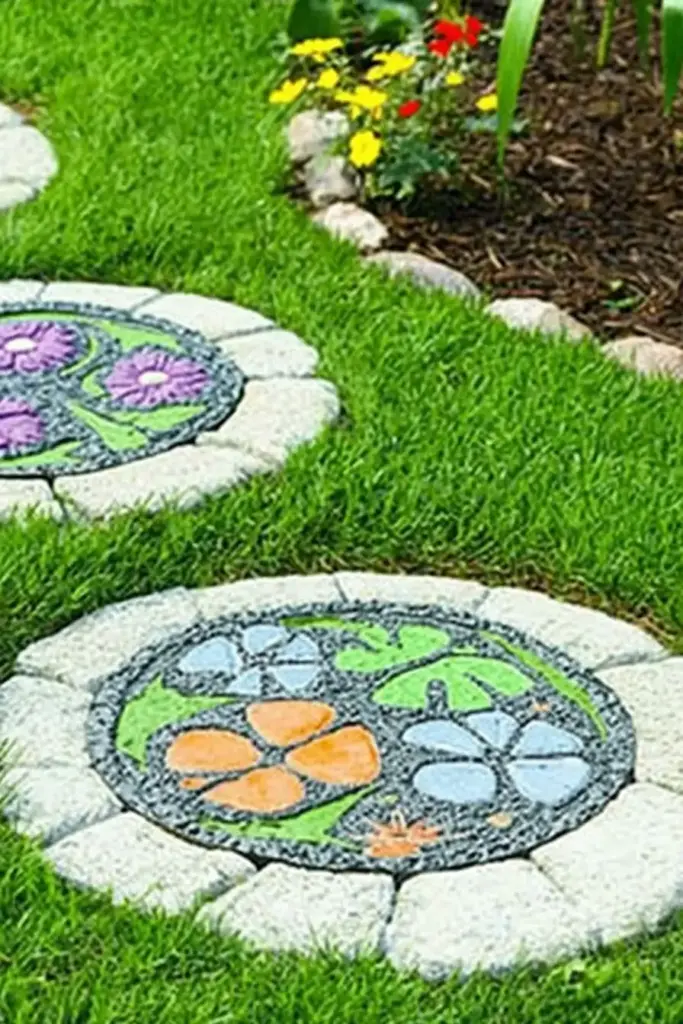
One of the most practical and low-maintenance flagstone path ideas is pairing flagstones with gravel fill. This combination delivers a balanced look—refined yet rustic—and offers superior drainage, making it perfect for wet climates or heavily used walkways.
The gravel between the stones serves both decorative and structural purposes, helping to keep the stones in place while reducing weed growth and erosion.
Key benefits of gravel fill:
- Prevents puddling and improves water flow
- Adds texture and color contrast to the pathway
- Reduces long-term maintenance needs
Installation suggestions:
- Choose pea gravel, crushed granite, or decomposed granite for best results
- Maintain consistent spacing (1–2 inches) between stones
- Compact the gravel base before laying stones to ensure stability
This path style works beautifully in Mediterranean, desert, or xeriscape gardens. You can even tint the gravel to match or contrast with your flagstone for a more curated look.
Flagstone with gravel fill is a go-to option for homeowners seeking durability and style with minimal upkeep. It also provides a gentle crunch underfoot, adding a sensory dimension to your outdoor experience.
8. Formal Garden Path
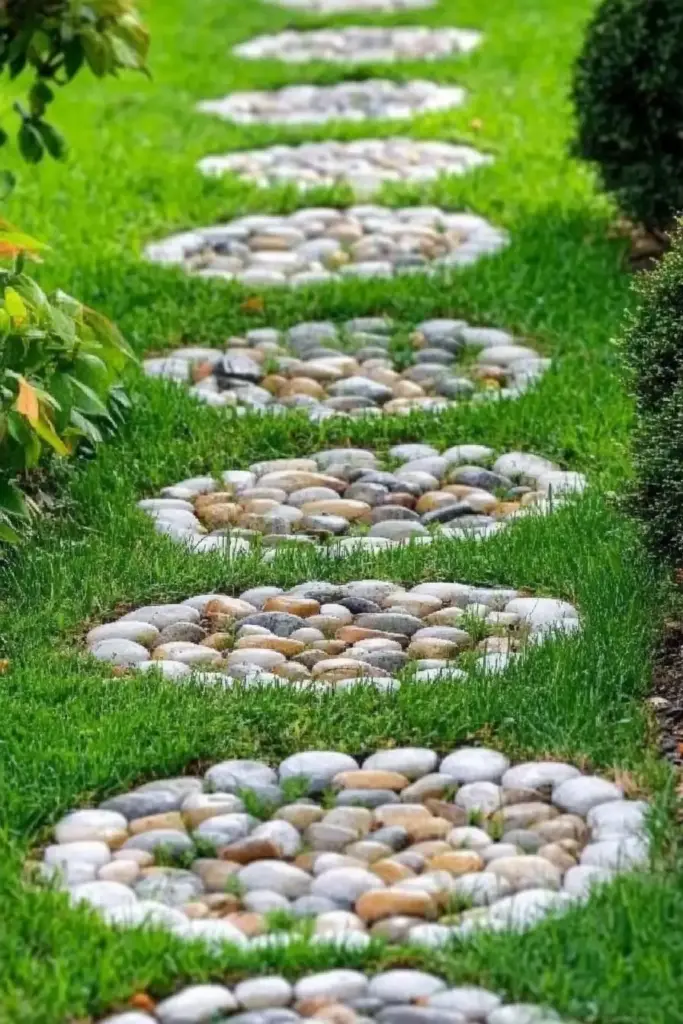
If you’re looking to add elegance and symmetry to your outdoor space, a formal garden path is one of the most timeless flagstone path ideas available. This design leans into clean lines, structured layouts, and balanced proportions to create a refined look that complements manicured gardens and classic landscapes.
Flagstone brings a natural softness to this otherwise structured style, offering both sophistication and a touch of rustic charm.
What defines a formal path?
- Straight or gently curved lines with consistent spacing
- Uniform stone shapes or a symmetrical pattern
- Defined edges—often framed with bricks, metal, or stone borders
Design details to consider:
- Use square-cut or evenly sized flagstones for a neater finish
- Incorporate lighting along the path for nighttime elegance
- Align the walkway with architectural elements like pergolas, fountains, or doors
Formal flagstone paths are ideal for front yards, courtyards, or any area where you want to create a strong first impression. They not only serve as navigational guides but also act as design anchors, adding polish and professionalism to your landscape.
9. Flagstone with Ground Cover
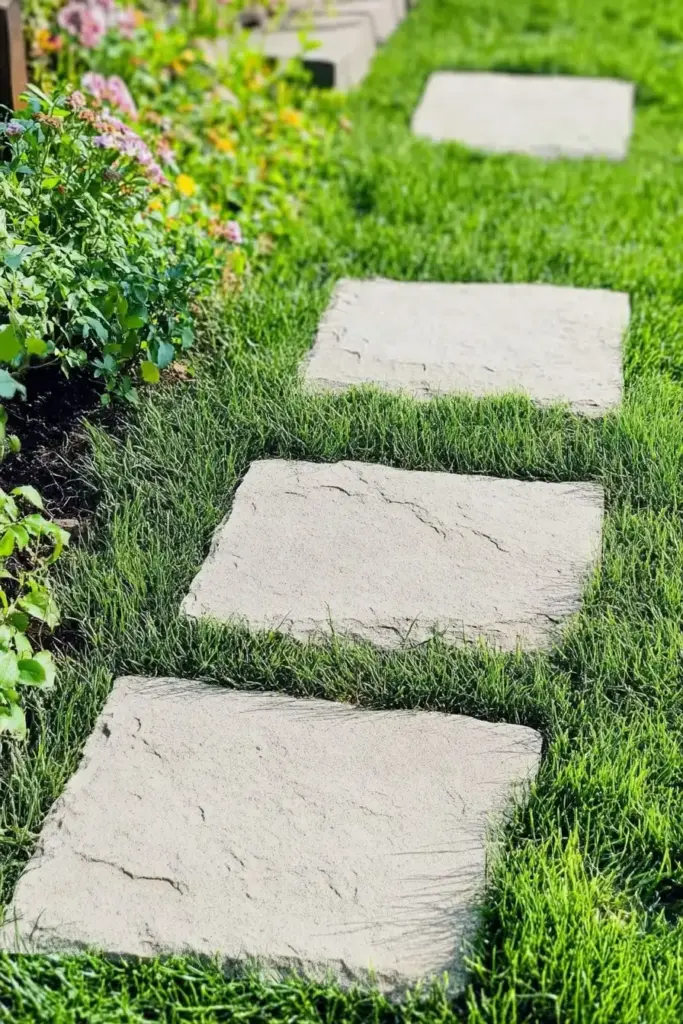
One of the most charming and eco-friendly flagstone path ideas involves pairing flagstones with living ground cover. This style blends hardscape with softscape, creating a lush, inviting path that looks like it’s been part of your garden forever.
Instead of filling joints with gravel or sand, ground cover plants like moss, creeping thyme, or sedum are planted between the stones. These low-growing plants add color, texture, and even fragrance, while helping with moisture retention and erosion control.
Why choose ground cover with flagstone?
- Softens the look of stone for a more natural appeal
- Adds biodiversity and pollinator-friendly plants to your garden
- Helps suppress weeds and stabilize soil
Best practices for planting:
- Leave 2–4 inches between stones for optimal planting space
- Use well-draining soil and choose plants suited to your light conditions
- Water regularly until plants are established
This pathway style is perfect for shaded woodland gardens or sunny cottage landscapes. It offers beauty and sustainability in equal measure, transforming an ordinary walkway into a living, breathing feature of your outdoor space.
Conclusion
Exploring different flagstone path ideas is a wonderful way to add structure, beauty, and personality to your outdoor space. Whether you’re drawn to the elegance of a formal layout, the artistic flair of a mosaic design, or the soft, inviting look of ground cover growing between stones, there’s a path style that fits your garden perfectly.
Flagstone’s versatility makes it a top choice for all types of outdoor aesthetics—from rustic woodland trails to refined patios and carefully planned courtyards. With thoughtful design and proper installation, these paths not only enhance visual appeal but also provide long-lasting functionality.
Start by picking a favorite style, or mix and match elements to design a walkway that fits your space. No matter what you choose, a well-placed flagstone path can instantly transform your yard into a more walkable, welcoming, and wonderfully cohesive landscape.
FAQ
What type of flagstone is best for pathways?
Sandstone, slate, and limestone are popular choices. Look for stones that are flat, slip-resistant, and at least 1.5 inches thick for stability and durability.
How do I prevent weeds between flagstones?
Use landscape fabric beneath the stones, fill joints with gravel or polymeric sand, or plant low-maintenance ground covers to naturally suppress weed growth.
Is a flagstone path expensive to install?
Costs vary depending on material, size, and labor. DIY installations using locally sourced stone can reduce expenses significantly.
Can I install a flagstone path without concrete?
Yes! Dry-laid flagstone paths with gravel or sand bases are common and easier to install than mortared options—plus, they offer better drainage.
🌿 Love gardening inspiration? Follow me on Pinterest for bold plant ideas, tips, and seasonal color!
More Posts

